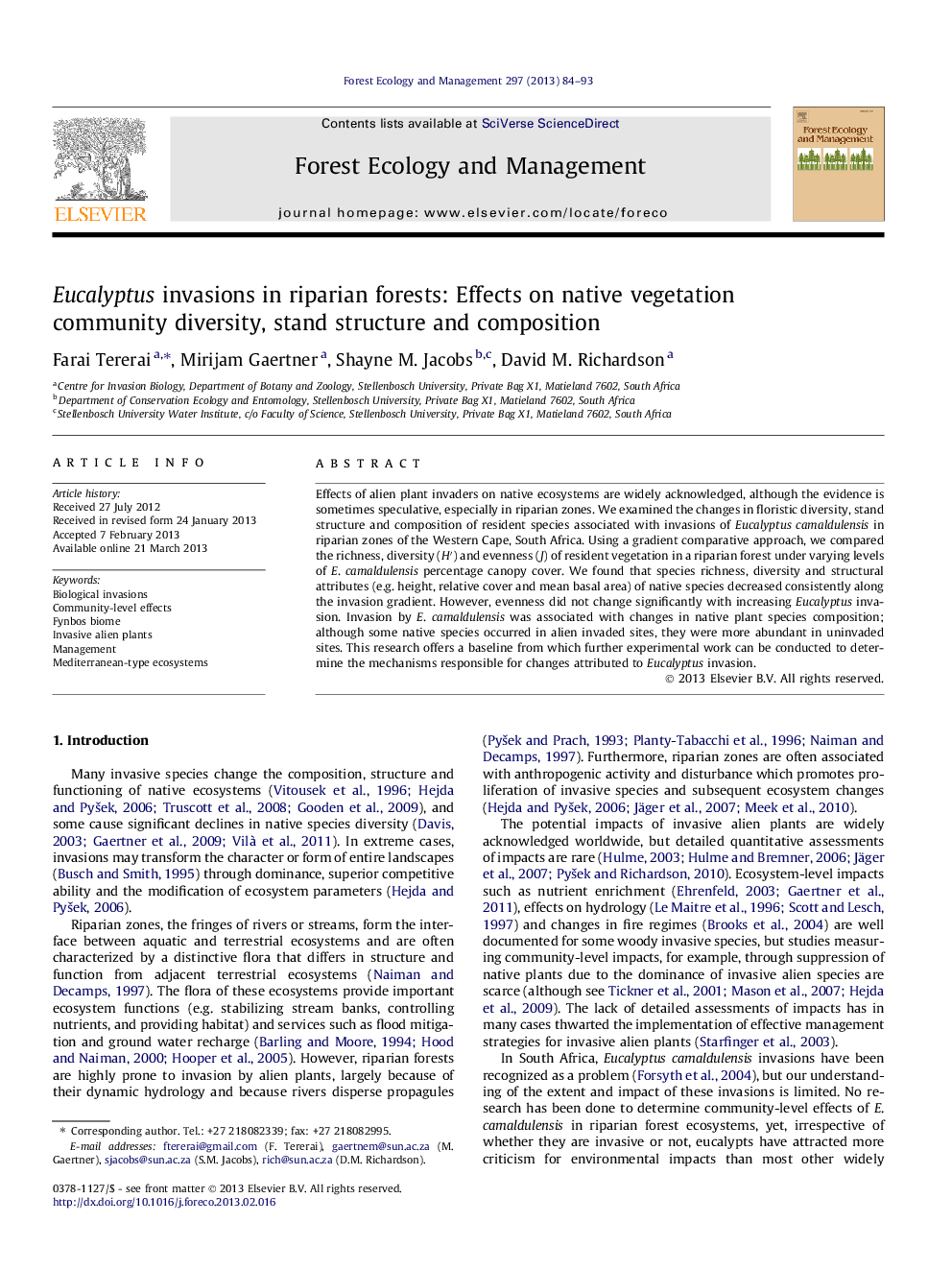| Article ID | Journal | Published Year | Pages | File Type |
|---|---|---|---|---|
| 87102 | Forest Ecology and Management | 2013 | 10 Pages |
Effects of alien plant invaders on native ecosystems are widely acknowledged, although the evidence is sometimes speculative, especially in riparian zones. We examined the changes in floristic diversity, stand structure and composition of resident species associated with invasions of Eucalyptus camaldulensis in riparian zones of the Western Cape, South Africa. Using a gradient comparative approach, we compared the richness, diversity (H′) and evenness (J) of resident vegetation in a riparian forest under varying levels of E. camaldulensis percentage canopy cover. We found that species richness, diversity and structural attributes (e.g. height, relative cover and mean basal area) of native species decreased consistently along the invasion gradient. However, evenness did not change significantly with increasing Eucalyptus invasion. Invasion by E. camaldulensis was associated with changes in native plant species composition; although some native species occurred in alien invaded sites, they were more abundant in uninvaded sites. This research offers a baseline from which further experimental work can be conducted to determine the mechanisms responsible for changes attributed to Eucalyptus invasion.
Graphical abstractFigure optionsDownload full-size imageDownload as PowerPoint slideHighlights► We examine changes in riparian forest traits related to Eucalyptus invasion. ► We used a gradient comparative approach which yielded satisfactory results. ► Results indicate Eucalyptus may cause alterations to native riparian forests. ► Changes in native richness, diversity and composition associated to invasion. ► Need for further experimental work to determine mechanisms of change.
